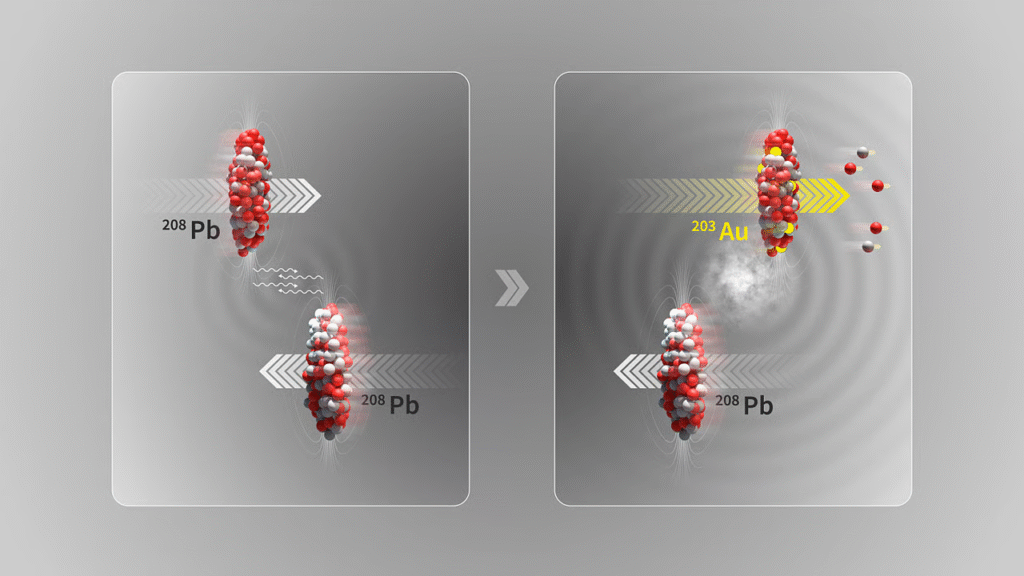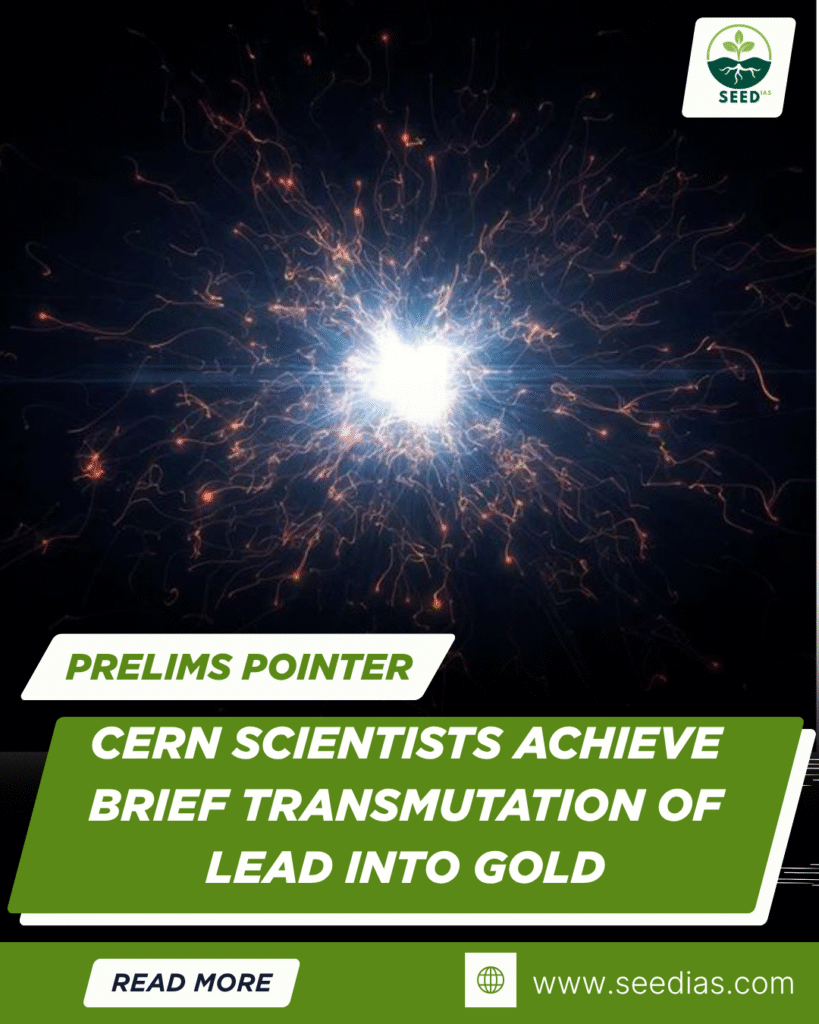Why in NEWS
Scientists at CERN have successfully demonstrated nuclear transmutation by momentarily converting lead (Pb) into gold (Au) during high-energy ultra-peripheral collisions at the Large Hadron Collider (LHC). Though the transformation lasted only for a nanosecond and in minuscule amounts, it highlights the cutting-edge frontiers of modern nuclear physics.
Key Terms / Concepts
| Term | Explanation |
|---|---|
| Nuclear Transmutation | The conversion of one chemical element into another by altering the number of protons or neutrons in an atom’s nucleus. |
| Ultra-Peripheral Collision | A near-miss interaction between atomic nuclei where they don’t touch but their electromagnetic fields interact. |
| Electromagnetic Dissociation | A process where intense electromagnetic fields knock out nucleons (protons or neutrons) from a nucleus. |
What Happened at CERN’s LHC?
| Aspect | Details |
|---|---|
| Accelerator Used | Large Hadron Collider (LHC), world’s most powerful particle accelerator. |
| Method | Lead nuclei accelerated and passed very close (but not touching). |
| Reaction Type | Ultra-peripheral collision using electromagnetic fields. |
| Result | High-energy photons emitted, causing loss of protons from lead nuclei. |
| Outcome | Lead (Z=82) lost 3 protons, forming gold (Z=79); other byproducts: thallium (Z=81), mercury (Z=80). |
| Duration | Transmutation occurred for only a nanosecond. |

Why is This Important?
| Significance | Explanation |
|---|---|
| Scientific | Provides insights into atomic behaviour under extreme conditions and electromagnetic interactions. |
| Technological | Demonstrates precision nuclear manipulation, advancing nuclear physics and particle research. |
| Historical | Realisation of the age-old alchemical dream to turn lead into gold—through modern physics. |

In a nutshell
Mnemonic: “LHC-Pb-Au”
Large Hadron Collider,
Lead to Gold
Though not economically viable, this achievement marks a scientific goldmine for understanding atomic identity transformations through electromagnetic manipulation.
Prelims Practice Questions
- Which of the following best describes “nuclear transmutation”?
A. Fission of heavy nuclei to produce energy
B. Fusion of light elements to form heavier elements
C. Change of one element into another by altering its atomic number
D. Conversion of mass to energy using E=mc² - In the CERN experiment, how was gold formed from lead?
A. By fusion of hydrogen atoms inside lead
B. By removing three protons through electromagnetic dissociation
C. By neutron bombardment of gold atoms
D. By heating lead under high temperature and pressure - Ultra-peripheral collisions are best described as:
A. Head-on collision of two nuclei
B. Fusion reaction of light atoms
C. Near-miss interaction of atomic nuclei via their electromagnetic fields
D. Collisions within neutron stars
Prelims Answers with Explanations
| Q.No | Answer | Explanation |
|---|---|---|
| 1 | C | Transmutation involves altering the atomic number, changing the element. |
| 2 | B | Gold formed from lead by loss of 3 protons via electromagnetic dissociation. |
| 3 | C | Ultra-peripheral collisions involve interaction via EM fields, not physical contact. |
















